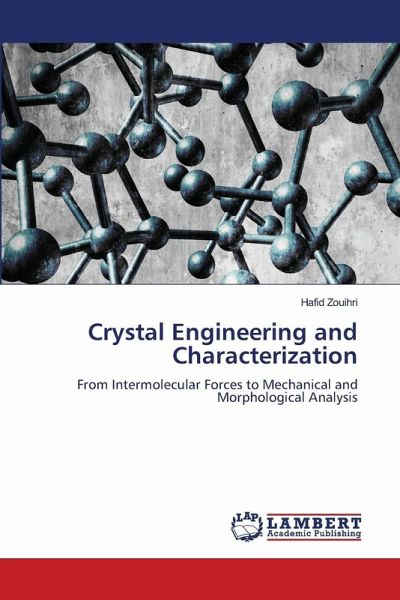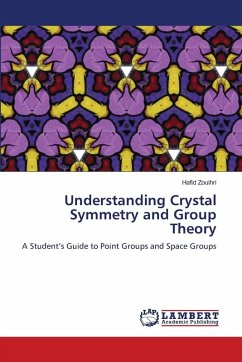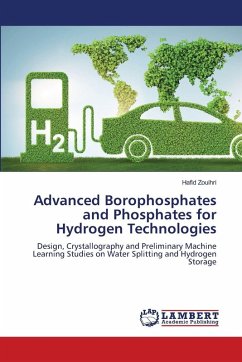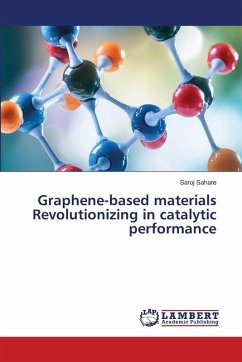
Crystal Engineering and Characterization
From Intermolecular Forces to Mechanical and Morphological Analysis
Versandkostenfrei!
Versandfertig in 6-10 Tagen
29,99 €
inkl. MwSt.

PAYBACK Punkte
15 °P sammeln!
This book explores crystalline materials, linking molecular interactions to macroscopic properties. It examines electrostatic, van der Waals, and hydrogen bonding effects on crystal packing, porosity, and stability. Computational tools, including molecular electrostatic potential mapping, HOMO-LUMO analysis, and deformation density studies, complement experimental techniques for a full understanding of crystal behavior.Crystal morphology prediction is detailed through Bravais-Friedel-Donnay-Harker (BFDH), Periodic Bond Chain (PBC) theory, and surface energy minimization, highlighting correlati...
This book explores crystalline materials, linking molecular interactions to macroscopic properties. It examines electrostatic, van der Waals, and hydrogen bonding effects on crystal packing, porosity, and stability. Computational tools, including molecular electrostatic potential mapping, HOMO-LUMO analysis, and deformation density studies, complement experimental techniques for a full understanding of crystal behavior.Crystal morphology prediction is detailed through Bravais-Friedel-Donnay-Harker (BFDH), Periodic Bond Chain (PBC) theory, and surface energy minimization, highlighting correlations with experimental data. Mechanical characterization, including Vickers microhardness, work hardening, elastic constants, and models like Hays-Kendall (HK) and Proportional Specimen Resistance (PSR), is also presented.With clear illustrations and step-by-step guidance, this book equips chemists, materials scientists, and crystallographers to design, predict, and evaluate crystal structures and properties for applications in electronics, photonics, and advanced materials engineering.












